An Act of Contrition is a Christian prayer genre that expresses sorrow for sins. It may be used in a liturgical service or be used privately, especially in connection with an examination of conscience. Special formulae for acts of contrition are in use in the Anglican, Catholic, Lutheran, Methodist and Reformed Churches.

The epiclesis refers to the invocation of one or several gods. In ancient Greek religion, the epiclesis was the epithet used as the surname given to a deity in religious contexts. The term was borrowed into the Christian tradition, where it designates the part of the Anaphora by which the priest invokes the Holy Spirit upon the Eucharistic bread and wine in some Christian churches. In most Eastern Christian traditions, the Epiclesis comes after the Anamnesis ; in the Western Rite it usually precedes. In the historic practice of the Western Christian Churches, the consecration is effected at the Words of Institution though during the rise of the Liturgical Movement, many denominatons introduced an explicit epiclesis in their liturgies.
Religions with the belief in a future judgment, a resurrection of the dead or a purgatory often offer prayers on behalf of the dead to God.

The following are Roman Catholic prayers to Saint Joseph.
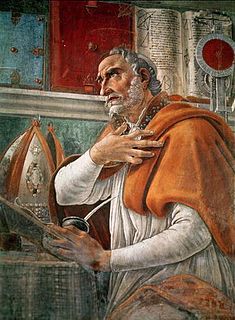
Intercession of the Saints is a Christian doctrine held by the Eastern Orthodox, Oriental Orthodox, and Catholic churches. The practice of praying through saints can be found in Christian writings from the 3rd century onward. The 4th-century Apostles' Creed states belief in the communion of Saints, which certain Christian churches interpret as supporting the intercession of saints. However, similar practices are controversial in Judaism, Islam, and Protestantism.
Consecration is the solemn dedication to a special purpose or service. The word consecration literally means "association with the sacred". Persons, places, or things can be consecrated, and the term is used in various ways by different groups. The origin of the word comes from the Latin stem consecrat, which means dedicated, devoted, and sacred. A synonym for consecration is sanctification; its antonym is desecration.
Absolution is a traditional theological term for the forgiveness imparted by ordained Christian priests and experienced by Christian penitents. It is a universal feature of the historic churches of Christendom, although the theology and the practice of absolution vary between denominations.
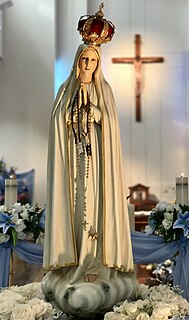
The Blue Army of Our Lady of Fátima, now mostly known as the World Apostolate of Fátima, is a public international association of the Christian faithful that has as its general purpose "the promotion of the authentic teaching of the Roman Catholic Church and the strict adherence to the tenets of the Gospel; the personal sanctification of adherents through faithful adherence to the Message of Our Lady of Fátima and the promotion of the common good by the spreading of that Message of Fátima".

A Christian child's prayer is Christian prayer recited primarily by children that is typically short, rhyming, or has a memorable tune. It is usually said before bedtime, to give thanks for a meal, or as a nursery rhyme. Many of these prayers are either quotes from the Bible, or set traditional texts.
In Christian liturgical worship, preces, known in the Anglican prayer book tradition as the suffrages, are short petitions that are said or sung as versicles and responses by the officiant and congregation respectively. It is one of the oldest forms of prayer in Christianity, rooted in the pre-Christian Hebrew prayers of the Psalms used in Temple worship.
In Roman Catholicism, the morning offering is a prayer said by an individual at the start of the day in order to consecrate oneself to Jesus Christ. The practice has traditionally been associated with the Apostleship of Prayer. While since 1929 the Pope has added a general and a mission intention to the traditional morning offering prayer each month, Pope Francis has restored this to the original, single monthly intention. Over time other forms of the morning offering prayer have been suggested.
Thanksgiving after Communion is a spiritual practice among Christians who believe in the Real Presence of Jesus Christ in the Communion bread, maintaining themselves in prayer for some time to thank God and especially listening in their hearts for guidance from their Divine guest. This practice was and is highly recommended by saints, theologians, and Doctors of the Church.

Catholic tradition includes specific prayers and devotions as acts of reparation for insults and blasphemies against Jesus Christ and the Holy Name of Jesus. These include the sufferings during the Passion of Jesus. Similar prayers as Acts of Reparation to the Virgin Mary and Acts of Reparation to The Holy Trinity also exist.

Marie Martha Chambon was a Roman Catholic nun known for introducing the Rosary of the Holy Wounds.

A number of prayers to Jesus Christ exist within the Roman Catholic tradition. These prayers have diverse origins and forms. Some were attributed to visions of saints, others were handed down by tradition.
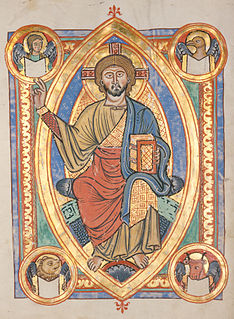
Saint Louis de Montfort's Prayer to Jesus is a reflection of his philosophy of "total consecration to Jesus Christ through Mary", a theme that centuries later influenced the development of Roman Catholic Mariology.
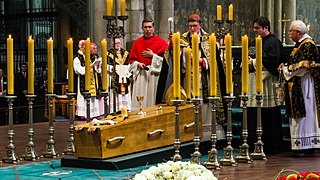
Absolution of the dead is a prayer for or a declaration of absolution of a dead person's sins that takes place at the person's religious funeral.

Spiritual communion is a Christian practice of desiring union with Jesus Christ in the Eucharist. It is used as a preparation for Mass and by individuals who cannot receive holy communion.
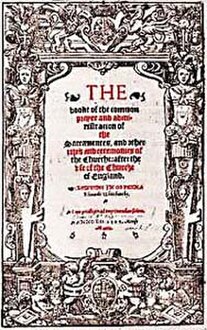
The 1549 Book of Common Prayer (BCP) is the original version of the Book of Common Prayer, variations of which are still in use as the official liturgical book of the Church of England and other Anglican churches. Written during the English Reformation, the prayer book was largely the work of Thomas Cranmer, who borrowed from a large number of other sources. Evidence of Cranmer's Protestant theology can be seen throughout the book; however, the services maintain the traditional forms and sacramental language inherited from medieval Catholic liturgies. Criticised by Protestants for being too traditional, it was replaced by the significantly revised 1552 Book of Common Prayer.
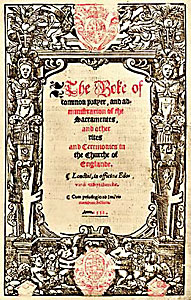
The 1552 Book of Common Prayer was the second version of the Book of Common Prayer (BCP) and contained the official liturgy of the Church of England from November 1552 until July 1553. English Protestants were disappointed in the 1549 Book of Common Prayer for being too similar to traditional Roman Catholic services. The 1552 prayer book was revised to be explicitly Reformed in its theology. During the reign of Mary I, Roman Catholicism was restored, and the prayer book's official status was repealed. Elizabeth I reestablished Protestantism as the official religion, and a revised version of the 1552 prayer book was a component of the Elizabethan Religious Settlement. The 1552 version formed the basis for the 1662 Book of Common Prayer, which remains the official liturgical book of the Church of England.















